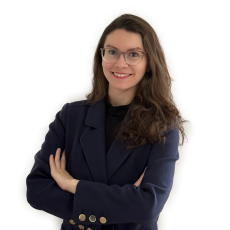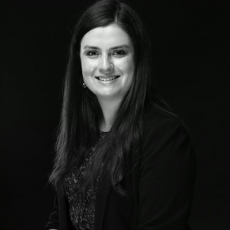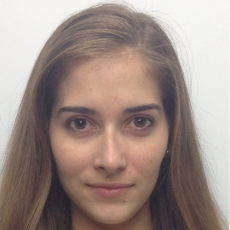
More info
The CEMS Global Alliance is a purpose-led organisation powered by our beliefs that outstanding leadership starts with self-leadership and that societal progress requires continual exploration. In this series of interviews, we look at diverse CEMS students and alumni who drive change and shape future business models!
What inspired you to pursue humanitarianism and how did you come up with the idea for the Circle of Young Humanitarians?
My path toward humanitarianism was shaped early on. A close friend's father worked as an ICRC (International Committee of the Red Cross) delegate, and his stories deeply impressed me. After high school, I volunteered with the Austrian Red Cross and worked in a hospital in Ecuador. These experiences confirmed my passion. Later, I studied International Affairs at the University of St. Gallen, where I wrote my thesis on the Red Cross and Red Crescent Movement.
Then I had the chance to work for the ICRC in Geneva. There I was deeply inspired by the ICRC delegates I met—individuals who risk their lives in war zones to protect others, often with little recognition. They embody courage and compassion, yet most people only see glimpses of their work in headlines, if at all. I felt strongly that their voices needed to be heard—that their lived experiences could teach us so much.
At the same time, I noticed a troubling disconnect: many young people I spoke to were overwhelmed by global crises—wars, displacement, injustice—but didn’t really understand how the humanitarian system works. They had questions like: Can I really make a difference? Does my donation reach those in need? What can I do from here?
So I decided to act.
Together with two close friends, and with the support of the ICRC, I founded the Circle of Young Humanitarians in 2021. Our aim is to bridge the gap between the younger generation and the humanitarian world—to create a platform where young people can learn, ask, reflect, and most importantly, act. We want to show that humanitarian values are not just for conflict zones—they belong in everyday life, in classrooms, in companies, in conversations. Ultimately, we believe that if more people feel connected to this world—and empowered within it—they can become part of a cultural shift toward greater humanity.
Could you share more about the CEMS course you're developing at HSG on Humanitarian Values in the Corporate World? What key principles do you hope to convey, and how do you see them impacting corporate environments?
We’re currently piloting a new CEMS Block Seminar at the University of St. Gallen titled “Social Responsibility: Humanitarian Principles in the Corporate Context.” The idea behind it is simple but powerful: to explore how insights from the humanitarian world—such as neutrality, impartiality, and context sensitivity—can inform decision-making in today’s complex business environment.
The course aims to bring together two spheres that rarely interact: the humanitarian world and the corporate world. At first glance, they may seem far apart—but both deal with people, responsibility, and navigating uncertainty under pressure.
It’s an ambitious undertaking—and deliberately so. Connecting these worlds is not straightforward. It raises tough questions, highlights uncomfortable tensions, and demands a high level of critical thinking. Our goal isn’t to turn business students into aid workers. It’s to offer them a broader lens—to help them recognize the systems they’re part of, the privileges they hold, and the ripple effects of their decisions. How do we act responsibly in fragile contexts? How do we lead in ways that are both strategic and human?
To explore these questions, the course blends academic input with interactive formats. Students engage with powerful guest speakers—leaders with deep experience in humanitarian work, diplomacy, and business—and may also take part in an innovation sprint or hackathon (tbc). Throughout, the focus remains on reflection, challenge, and critical engagement with real-world dilemmas.
We’ve seen how companies increasingly operate across borders, influence millions of lives, and shape public narratives. That power comes with responsibility—but also with enormous potential. If used wisely, business can be a genuine force for good. Our aim is to support a new generation of leaders who are pragmatic, reflective, and unafraid to ask: “What kind of impact do I want to have?”
In your experience, what are the most significant challenges and opportunities in embedding social responsibility into business practices?
One key challenge is that responsibility doesn’t fit neatly into a spreadsheet. It requires judgment, long-term thinking, and sometimes doing what’s right even when it’s not the most profitable or popular choice. That’s not easy in systems that reward short-term results and efficiency above all else.
Another difficulty lies in ambiguity: there are rarely perfect solutions. Acting responsibly often means navigating trade-offs—between global standards and local realities, between business goals and social consequences. That demands not just frameworks, but reflection and integrity.
At the same time, the opportunity is real. Companies today operate at a scale where their choices matter—sometimes more than those of governments or NGOs.
When companies embrace social responsibility not as a marketing add-on but as part of their identity and strategy, they can build real trust—and long-term resilience. They can attract people who want to work with purpose, innovate in ways that matter, and become credible players in a world that increasingly demands more than just profit.
What advice would you give to CEMSies who want to drive humanitarian values within their own organisations or career paths but may not know where to start?
Start small—but start consciously. Humanitarian values aren’t only relevant in conflict zones. They show up in how you treat people, how you listen, how you handle power. You can live these values in a corporate role, a start-up, a consultancy—anywhere.
Second, don’t be afraid to ask uncomfortable questions. Responsibility begins with curiosity: Whose voice is missing? Who benefits, and who bears the cost? What are we not seeing?
And finally: stay connected. Find peers who care. You’ll need them. Because driving change isn’t always easy—but it’s a lot easier when you’re not doing it alone.
Reflecting on your time at HSG and within the CEMS community, what impact do you feel you've made and how do you see your humanitarian mission evolving in your career?
I hope that this course—and the conversations around it—will encourage more students to see humanitarian thinking as something relevant to their everyday leadership. Not just a niche interest, but a mindset that sharpens how we see the world, and how we act within it.
Within CEMS and at HSG, I’d love to help normalize the idea that you can be both strategic and values-driven—that moral clarity and pragmatic thinking aren’t opposites, but two sides of responsible leadership.
Looking ahead, I’ll continue working with the Circle of Young Humanitarians to build bridges between sectors, generations, and disciplines. There’s still so much work to do—but also so much energy out there. I believe in that energy. And I believe that if we keep showing up—with clarity, humility, and purpose—we can shape something meaningful.
------------------------------------------------------
Published on 10.06.2025


